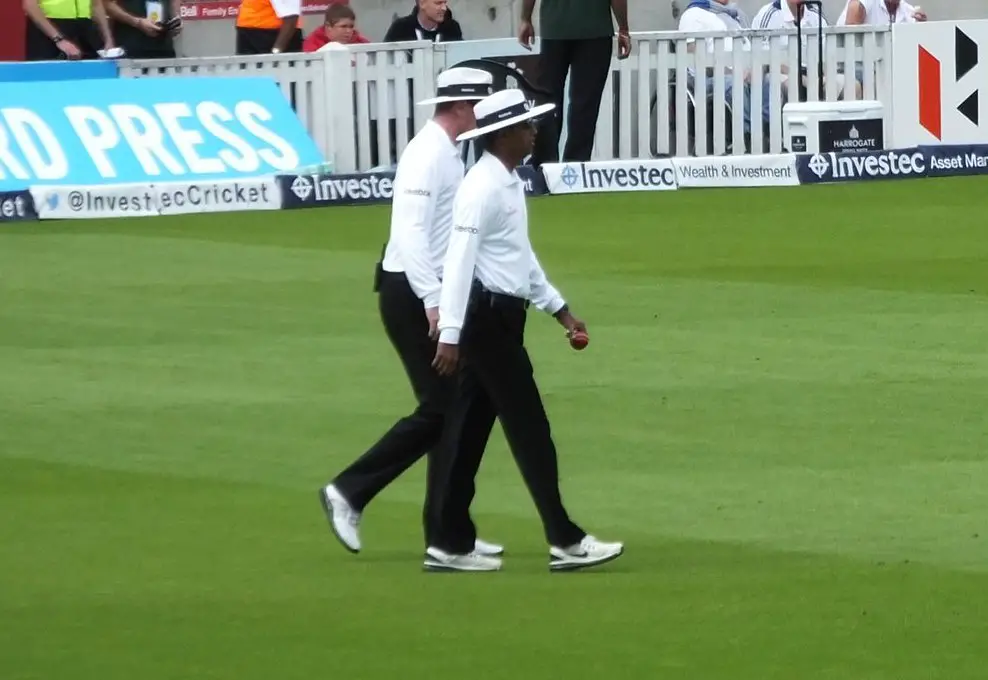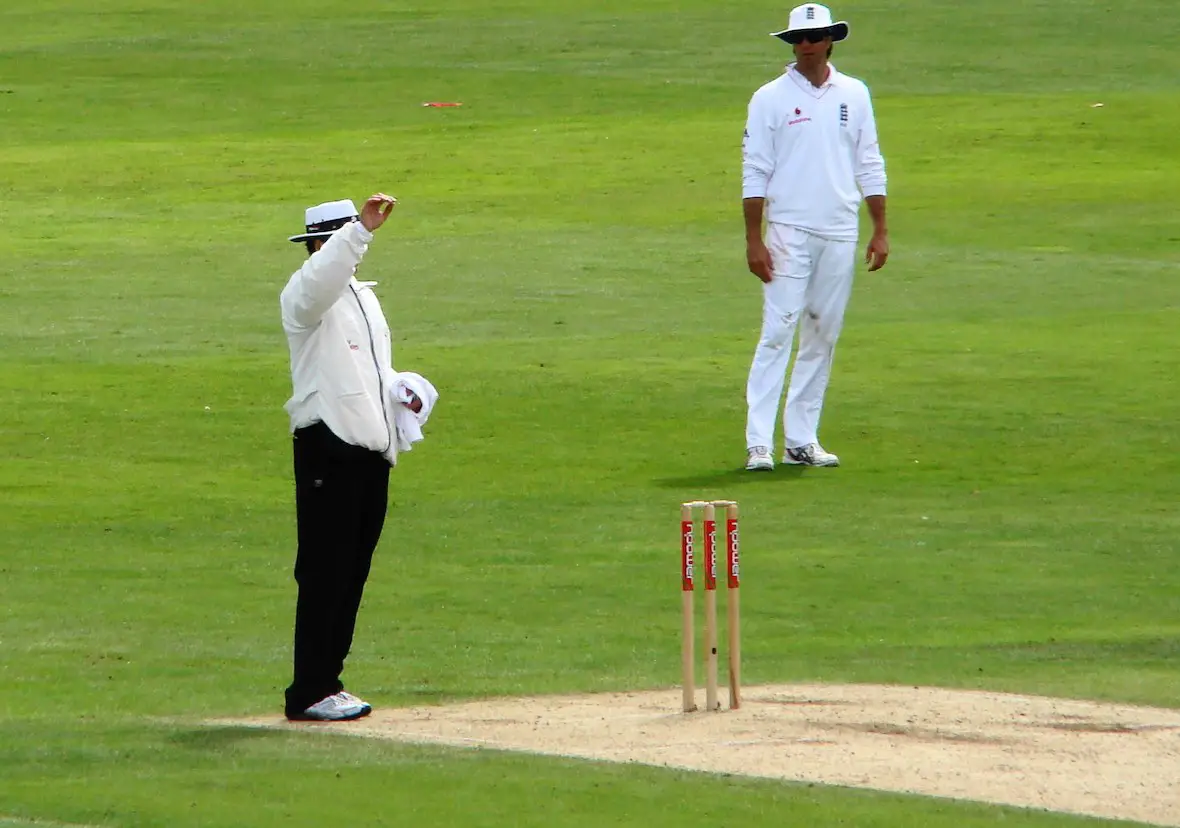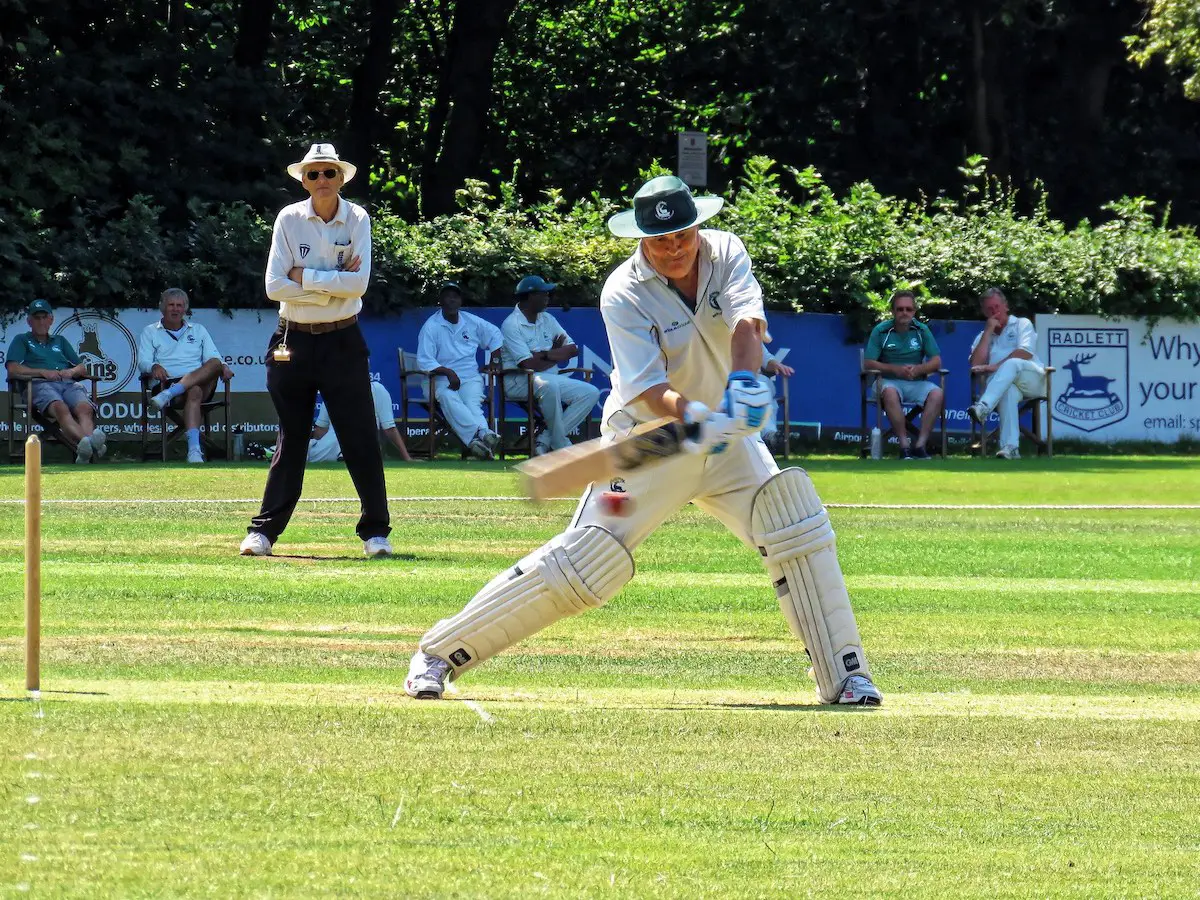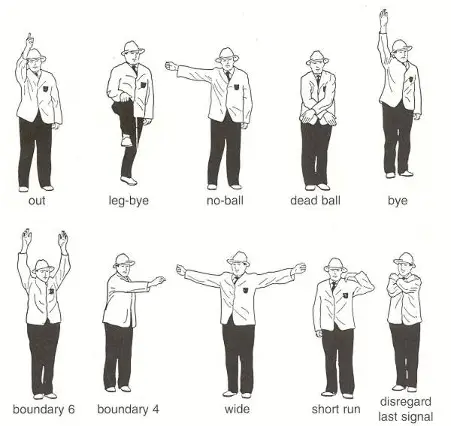Every sport requires an umpire or a referee to enforce the rules and make sure the game is being played in the correct spirt; and, of course, cricket is no exception to this practice.
An umpire in cricket is a person from the official team tasked with making important decisions during the course of a cricket match. Umpire’s decision is the final decision on the field. An umpire also ensures that the equipment used, and match conditions are fair and follow the rules of the game.
An umpire’s job begins as soon as they arrive at the ground, and they continue until long after the final bowl is bowled. Here’s everything you need to know about an umpire in Cricket!
Who is an Umpire in Cricket?

As mentioned above, an umpire on a cricket field is an individual functioning in an official capacity to oversee and adjudicate decisions during a cricket match.
In most cases, there are two umpires officiating a cricket match on the field. At the international level, there is another umpire known as the third umpire, who is not present on the field but is equally involved in the action going on the field.
A cricket umpire can easily be identified on a cricket field as they typically are dressed differently than the other players on the field. You will usually see them wearing a hat rather than a cap, and a black trousers with white (or red) shirt.
When the match is taking place, one of the umpire shall be seen at the bowler’s end, while the other umpire would be usually seen standing at the leg side of the batsman on the strikers end. The umpire in this position is known as the leg umpire.
What are the Responsibilities of an Umpire in Cricket?
In most games at any level, there will be two umpires on the field of play at any one time. Each command one end of the field, taking it in turns to stand either behind the stumps at the bowler’s end, or in line with the batsman’s crease in the ‘square-leg’ position.
As we already mentioned, in the professional game, there is often also a ‘Third Umpire’ who is in control of the video-assisted decision making. There are certain circumstances when the ‘Third Umpire’ can over-rule the on-field umpire’s decision.
However, this can only happen if the umpire asks for their help or if a team chose to contest an umpire’s decision using a referral.
Nevertheless, each umpire has a key role to play during the course of the cricket match. Let’s look at some of the responsibilities of a cricket umpire –
Responsibilities Before a Match Starts
Although umpires must be vigilant throughout the entirety of the match, they often carry out the majority of the umpire’s duties before even a single bowl is bowled!
When they arrive, one of their firsts tasks is to judge the condition of the field of play. They must make sure that the wicket which has been selected by the ground staff to play on meets the required regulations and that the outfield is in a suitable condition to play.
Particularly if the field is affected by rain, it is the umpires who have to make a decision about when and if the match should take place.
The umpires must also make sure that the teams are ready to play and that both captains are happy with the conditions, equipment, and rules by which any particular match will be played.
After all, T20 matches have different rules in some cases to Test Matches, so it is important everyone is fully aware of these before play begins.
Keeping Count of the Bowls Bowled

One of the jobs of the umpire is to keep track, on the field, of how many bowls have been bowled in an over.
This responsibility does not lie entirely on their shoulders, as the scorers off the pitch will also be keeping a tally of this in case they should make a mistake.
However, the game flows a lot more smoothly when the umpires are themselves able to stay on top of this relatively simple aspect of their job.
It is, however, not the umpire’s job to keep tally of the score. There are lots of gadgets available to help make this an easier task, such as hand-held tickers to keep tally of each ball bowled in an over.
We covered the list of devices used by a cricket umpire in detail giving a complete breakup of all the various gadgets that are at the disposal of a cricket umpire. Be sure to check it out!
Although, no doubt, and umpire will be keeping a beady eye on the score of the match should the scorers make any obvious mistakes on the scoreboard.
However, this is predominantly the responsibility of the scorers, so that the umpires can focus on the smaller details of the match which require them to make the correct decisions.
Duties of the Umpire at the Bowler’s End

The umpire at the bowler’s end has to keep an eye out to see if the bowler’s foot is over the line of the popping crease. If it is, then they must award a no ball as per the directions above.
Similarly, it is the job of the umpire at the bowler’s end to decide whether or not a ball was outside the line at which it must be deemed a wide. This can be subjective, although the leniency is generally greater in longer forms of the game; as umpire’s look to encourage bowlers to bowl nearer the stumps in T20 cricket in order to allow for more wickets and runs.
They must also make decisions as to whether the bowler is impeding on areas of the wicket which they are supposed to avoid stepping in. This is because a bowler might repeatedly plant their foot in a spot which, if roughed up, might make it harder for the batsmen, thanks to a more unpredictable turn and bounce, when he returns to that end in the next over.
Umpires can warn bowlers about this no more than three times, at which point penalty runs will be awarded and the bowler forbidden to bowl any more.
Last but not least, it is the job of the umpire at the bowler’s end to decide whether or not a batsman is out Leg Before Wicket (LBW). This requires a keen eye for geometry and physics and must take into account the flight, turn, bounce, pitch, and line of delivery at the point when the ball strikes the batsman’s pads.
Responsibilities of a Square Leg Umpire

The square leg umpire is there to assist his partner at the bowler’s end with any of these decisions should he spot anything that may help him in making a decision.
The square leg umpire is also required to watch for the height of the delivery when it passes the batsman. If it is too high, either before or after it bounces, as it passes the batsman and goes through the wicket-keeper, then they must declare that ball to be a ‘no-ball’.
The square leg umpire is also required to make decisions about run-outs and stumpings at their end. While run out decisions are required by umpire’s at both ends (and are regularly checked by a third umpire in games where there is one) the square-leg umpire has a greater responsibility to watch for a batsman being caught out of his crease by the wicket-keeper if or when he misses the ball.
Role of the Third Umpire in Cricket

Stumpings are often something for which the on-field umpires will go to the ‘Third Umpire’ or DRS (Decision Review System) to check, as well as runouts as previously mentioned.
They will also help in making decisions about people being caught or run out and bowled LBW; as well as deciding whether or not a ball has gone over the boundary for a four or a six.
They not only have the use of televisual footage when making these decisions but in some cases, they also use technology such as Hot Spot, Hawkeye and Snick-o in order to help them find conclusive evidence upon which to base their ultimate call.
What are the Various Types of Umpire’s Signals?
One of an umpires most important tasks is to relay to both the scorers and any people who might be watching around the ground, what decision they have made at any given time.
Unlike American Football where umpires often speak to the crowd through a microphone, as well as using hand signals; cricket umpires rely entirely on a number of gestures which indicate to anyone concerned what has just happened on the field of play.

Some of the basic hand-signals of a cricket umpire are elaborated as below –
- Batsman Out – The umpire raises one arm above his head, with his index finger outstretched.
- Four – The umpire swishes his hand in front of his chest, signifying the ball rolling along the floor to the boundary.
- Six – The umpire raises both arms above his head, often with index fingers pointing to the sky.
- No Ball – The umpire extends his right arm to his side perpendicular to his body.
- Wide – The umpire extends both arms to the side.
- Bye – The umpire raises his arm in the air and signals with the other how many runs were scored with his fingers.
- Leg bye – The same as with a bye but lifting his leg and patting it with his hand
- One Short – When the batsman fails to plant his bat beyond the crease when running between the wickets, the umpire taps his shoulder and indicates with his fingers how many times they failed to break the line of the crease.
- Referring to the 3rd Umpire for Help – Drawing the outline of a tv monitor with the hands in front of the face.
How do Umpires get Selected?
The process of an umpire getting selected in the domestic circuit is a bit different from the one’s selected at the international matches. Let’s understand the process for domestic umpires at once.
Selection of Umpires at the Domestic Level
At the domestic cricket level, there are several steps that an individual usually needs to go through
Prospective umpires first need to pass what is called an “Umpire Certification Exam”. Once an individual clears that exam, he becomes eligible to officiate in local matches.
Over the course of several years, an umpire needs to participate in refresher exams and continue officiating in official local league matches. Based on the performance of the umpire, he is chosen to participate in state or county cricket matches.
Selection of Umpires at International Cricket Matches
Selection of umpires at the international level follows a slightly different process.
Top performing umpires at the domestic circuit from a particular are nominated by the respective Country’s Cricket Boards to participate in the Umpire Course & Certification Exam organised by the International Cricket Council (ICC).
Once an umpire clears these exams, they are designated to participate in International Cricket Matches. Each umpire’s performance is evaluated throughout the year for every single match.
Based on the performance during the matches, and the subsequent refresher courses, umpires get inducted into the ICC Umpire’s Elite Panel.
Umpires in the Elite Panel get special perks and higher allowances. Additionally, only the umpires from the Elite Panel get to participate in the major tournaments organized by the ICC.
What Skills do Umpires Need?
As you can imagine from all of the above information, umpire’s must have a number of important skillsets in order to do their job effectively and to keep everybody happy – which may quite often be the hardest job of all.
They must have unwavering levels of concentration, first and foremost. Each and every ball they have to keep their eyes on several important details of the match; sometimes several at once and sometimes repeating this day after day for five days on end if they are officiating a test match.
They must also have an eye for detail, as their decisions are often reliant on minute differences of just a few millimetres, if the batsman is just short of his crease or if the ball is just pitching outside the line of off-stump.
This also means that they need a strong belief in their ability to make decisions. Especially when the bowling side is all screaming in your face asking for you to give the batsman out, it takes nerves of steel not to budge on your gut feeling.
Ultimately, as stated by former umpire Simon Taufel, having ‘mental strength’ is a key skill for any umpire – particularly in the modern game where you have to frequently admit you made the wrong decision if the 3rd umpire or DRS overturns the original one.
How Much do Umpires Get Paid?
On average, the salary of an international umpire empanelled with the ICC’s Umpire Elite Panel can get paid in the range of about $115,000 to $140,000 annually!
The above amount includes an annual fixed base pay which is given irrespective of the total number of matches officiated. This is usually around $35,000 to $45,000 based on how much experience an umpire already has as a member of the Elite Panel. However, the variable pay is based on the number of various formats of the international matches officiated.
Typically, a cricket umpire who is part of the ICC umpire’s elite panel gets to participate in about 8-10 Test Matches a year, about 15 ODI matches, and approximately 10-12 T20 matches every year.
The payment is quite substantially lower for umpires at the domestic circuit. This varies significantly across the various governing cricket boards of the test playing nations.
How to Become an Umpire?
In order to become an umpire, you must pass a number of courses, exams and tests to prove that you know the rules and are able to effectively implement them on the field of play.
These range from courses to help those who might simply want to help out with officiating at their local club or school, right through to those at the highest level, officiating on the world stage at tournaments such as the ICC World Cup or The Ashes.
It is important to note that although the process of becoming an umpire varies slightly from one country to another, it is largely similar in nature across most of the test playing nations.
We wrote about how to become an umpire in great depth! Be sure to check it out if that’s something that interests you.
Final Thoughts
An umpire plays the most important role in a cricket match. However, being an umpire in cricket is not all that easy. They have a huge list of responsibilities that they have to carry out.
My hope is that this article gives you an adequate insight into who is an umpire and the role they play during a cricket match.

